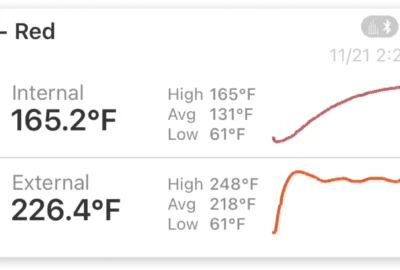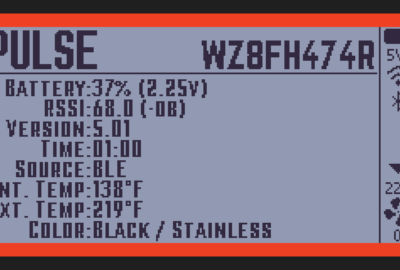Manufacturing, Tech
From Page to Product
Taking a product from concept to consumer is no easy feat. It starts with an idea, but how do you bring it to life? For FireBoard, it meant teaming up with an experienced Electrical Engineer, someone who is responsible for designing, reviewing, and implementing products.

A block diagram example.
“We had a couple meetings, and the next thing you know we had a prototype FireBoard.” says Tyler, an electrical engineer who was introduced to FireBoard founder Ted Conrad through a mutual friend. He makes it sound simple.
There are several different phases when trying to design a product. First, of course, is the idea. What do consumers need? What do they want? What will they like? “From there, I develop a plan on how to implement the design.” According to Tyler, this usually starts with a block diagram of the whole system, a sort of “how it works” flow chart that acts as a higher level, less detailed description that clarifies overall concepts rather than the details of implementation.

A FireBoard prototype board that did not make it into production.
Up next: design. This phase consists of schematic design and printed circuit board (PCB) design. The complexity of the design directly dictates how long this takes. “There is quite a bit of collaboration that occurs,” says Tyler, particularly between software and hardware. “Every device has complex software running and it is very dependent on the circuit design.”
According to Tyler, the most exciting phase is prototype. “At this stage, I get to have a physical product that I can perform testing on and ensure that it works the way I designed it.” If there are modifications to be made, then the design steps are repeated. Think of this phase as a trial run, repeated again and again until there is a prototype that works the way it is expected.
From there, a small batch of product is produced and vigorous, real-world testing is performed. This is the final step before mass production for the consumer occurs. If something comes to light during the testing, the design and prototype phases may be revisited.
There are always challenges when trying to design a new product from initial concept, especially when it comes to sensitive measurements. One big challenge with the FireBoard, as new products are developed, is keeping everything backwards compatible. “As a designer, you want to use the latest and greatest components,” says Tyler, “But trying to incorporate legacy products makes things complicated. To overcome this, you must think  differently than you did originally.” Collaboration comes into play again, giving a new perspective and making it easier to find solutions.
differently than you did originally.” Collaboration comes into play again, giving a new perspective and making it easier to find solutions.
The process is not a straight line, nor does it have a definitive end. As Tyler says, “Innovating is an absolute must.” To make sure FireBoard is the best product available, we circle back to improve current offerings while simultaneously moving forward, developing new products to bring to consumers. “We want to make sure we have the best features and the best hardware available. ” This applies to the old as well as the new. Cue phase one: the idea. And here we go again.









Leave a reply